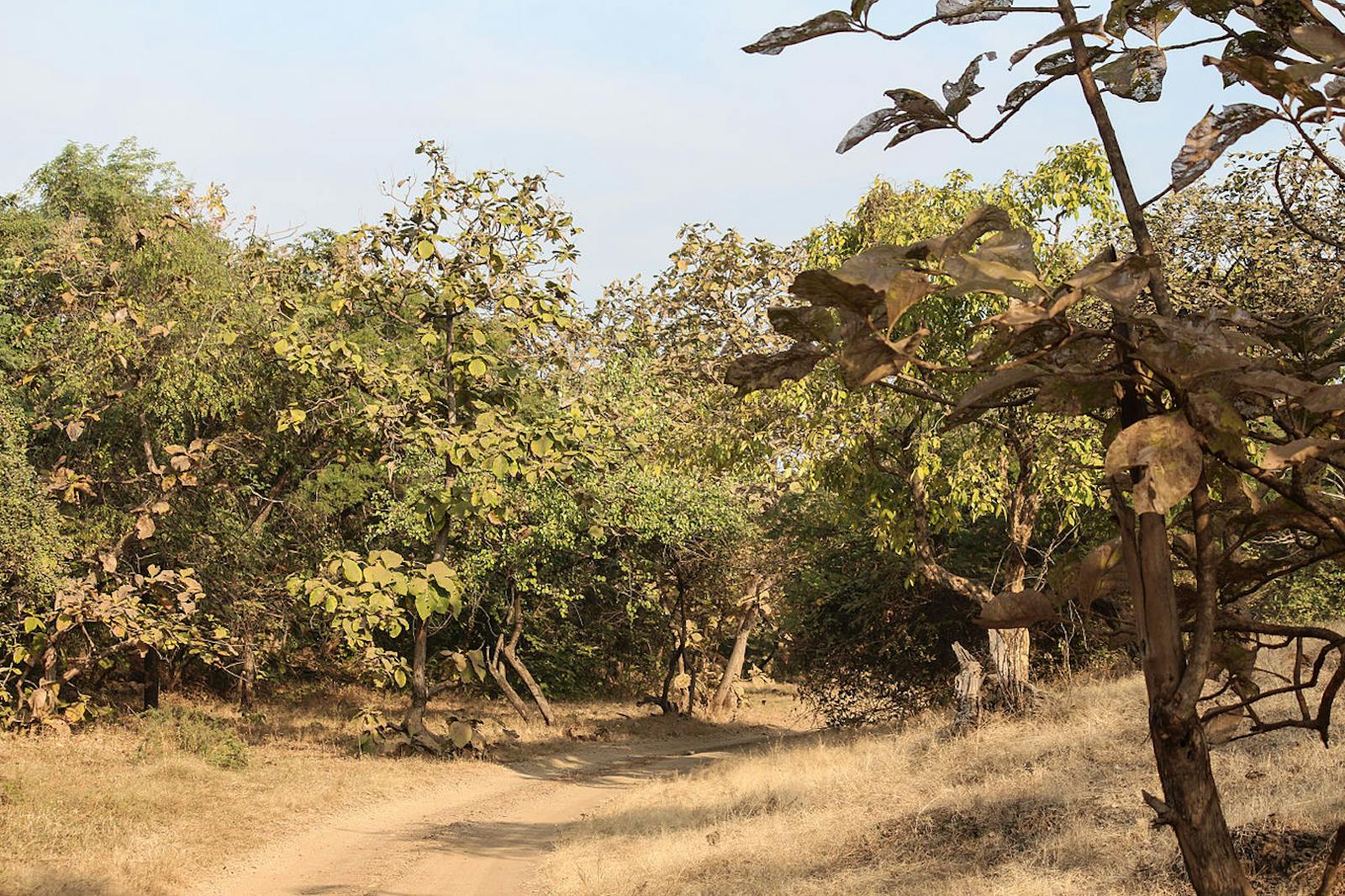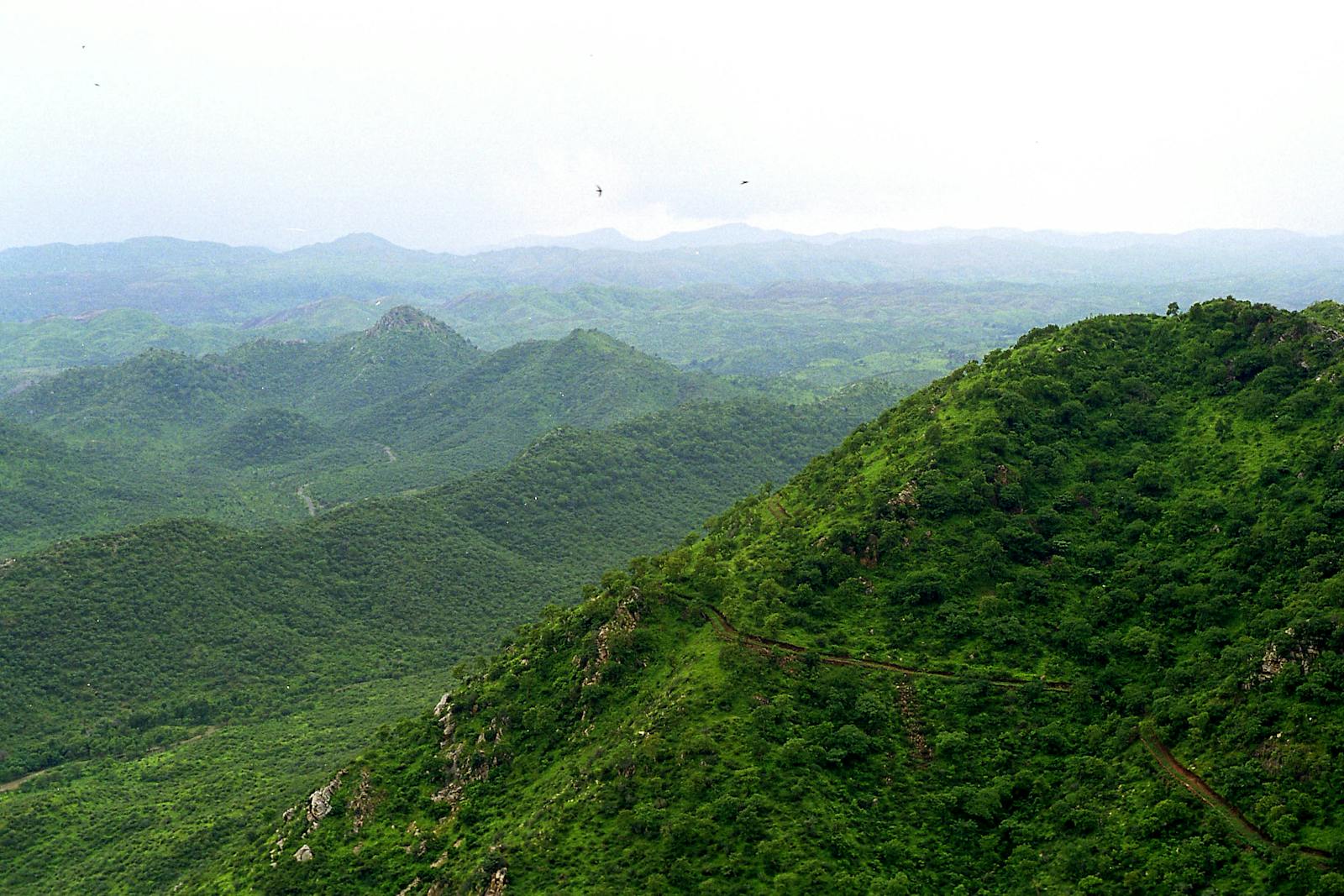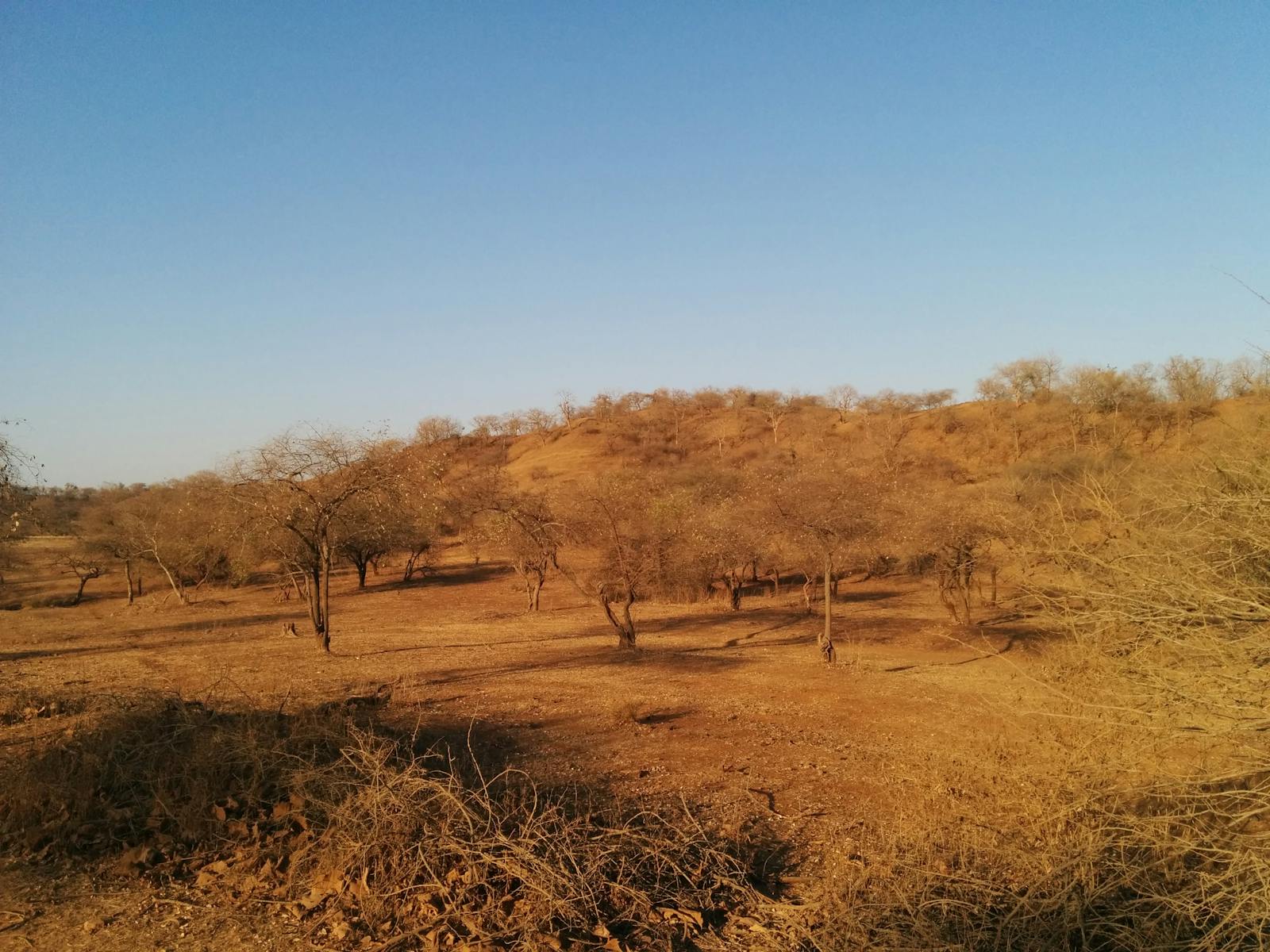Khathiar-Gir Dry Deciduous Forests
The ecoregion’s land area is provided in units of 1,000 hectares. The conservation target is the Global Safety Net (GSN1) area for the given ecoregion. The protection level indicates the percentage of the GSN goal that is currently protected on a scale of 0-10. N/A means data is not available at this time.
Bioregion: Indian Dry Deciduous Forests (IM3)
Realm: Indomalaya
Ecoregion Size (1000 ha):
26,756
Ecoregion ID:
295
Conservation Target:
6%
Protection Level:
7
States: India
The Kathiarbar-Gir Dry Deciduous Forests is the only ecoregion in Asia to support lions. The population of Asiatic lions is now restricted to the Gir National Park and surrounding areas in India’s northwestern Gujarat State, and had grown to 523 animals by 2015, while unofficial estimates for 2017 place the population even higher at 650 individuals.

The flagship species of the Khathiar-Gir Dry Deciduous Forests ecoregion is the Asiatic lion. Image credit: Creative Commons
The ecoregion covers the dry deciduous forests that are surrounded by the extensive thorn scrub forests that cover most of India’s northwestern regions. The climate is hot and arid for most of the year, and receives only 550 to 700 mm of rain annually. Temperatures regularly soar to over 45°C and drop to near freezing on cold winter nights.
This is a transition area from the Afrotropical to South Indian floras, and thus has representatives from both. The forests can have a three-layered structure, with the upper canopy at 15 to 25 m height. Teak is the dominant tree species in the more humid areas, in association with a relatively diverse mix of species of Aegle, Boswellia, Diospyros, Bombax, Sterculia, Emblica, Dalbergia, and Terminalia. But in drier areas this diversity is replaced by almost pure stands of Anogeissus pendula, a small, hardy tree that can survive extreme conditions.
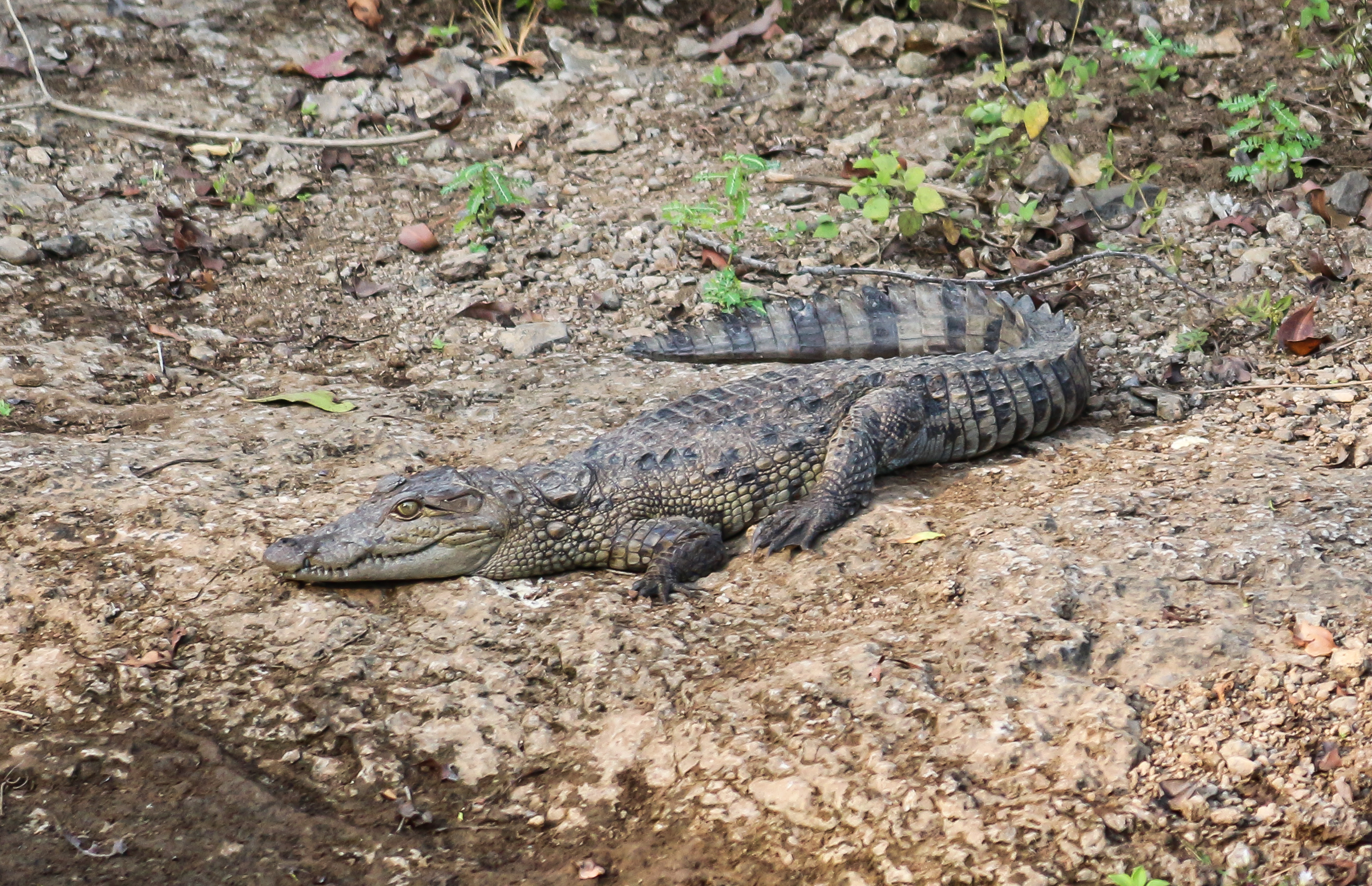
Mugger crocodile in Gir Forest National Park. Image credit: Courtesy of Bernard Gagnon
A unique feature of this tree is that it can grow well on rocky surfaces, and is found predominantly on the quartzite ridges and gneiss hillocks of the Aravalli mountain system, usually in association with Acacia catechu, another species that grows well in harsh conditions. The rocky hillocks are also characterized by trees species of the cactus-like Euphorbia, Acacia, Wrightia, and Grewia, all of them trees that are adapted to arid environmental conditions.
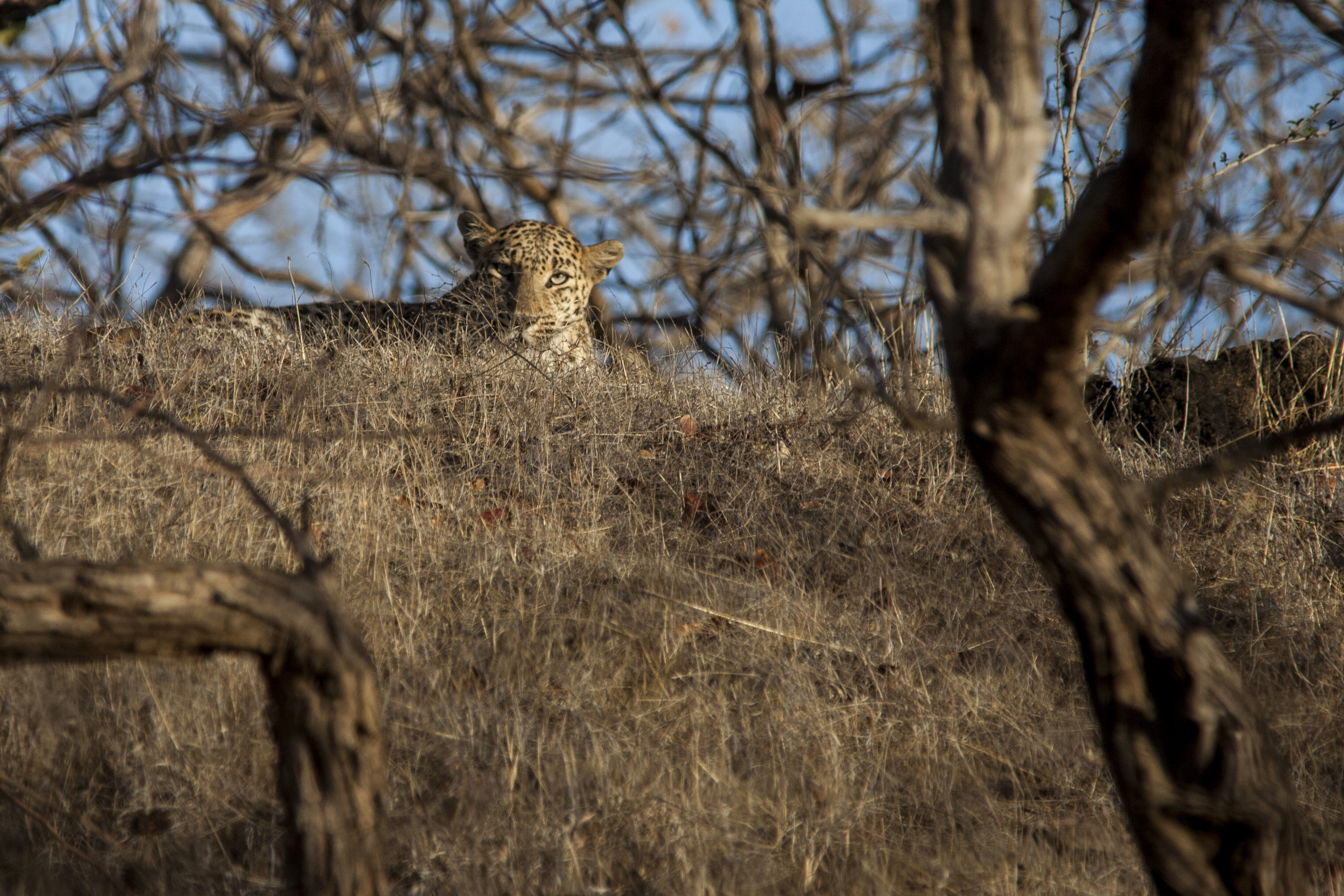
Indian leopard. Image credit: Creative Commons
Most of the original natural habitat has now been degraded or converted, but the ecoregion still harbors several mammal species, in addition to its most famous charismatic denizen: the Asiatic lion. Some of the other larger predators in the ecoregion include the common leopard, Indian wolf, and striped hyena, with smaller predators such as golden jackal, jungle cat, and rusty spotted cat. These predators survive by hunting a range of herbivores, from the larger sambar, blue bull, and spotted deer to the smaller chousingha or four-horned antelope, Indian gazelle or chinkara, wild boar, and the black-naped hare.
Although the wild prey of the lions that live inside the Gir reserve is mainly the spotted deer that represented about 80% of their diet, the lions outside the protected area preyed more on domestic livestock, which can create a conflict situation with local people. Overall, about 80 mammal species have been recorded from this ecoregion, but the bird fauna is much richer, with over 300 species on record. The list includes two globally threatened bird species, the Indian bustard and lesser florican.
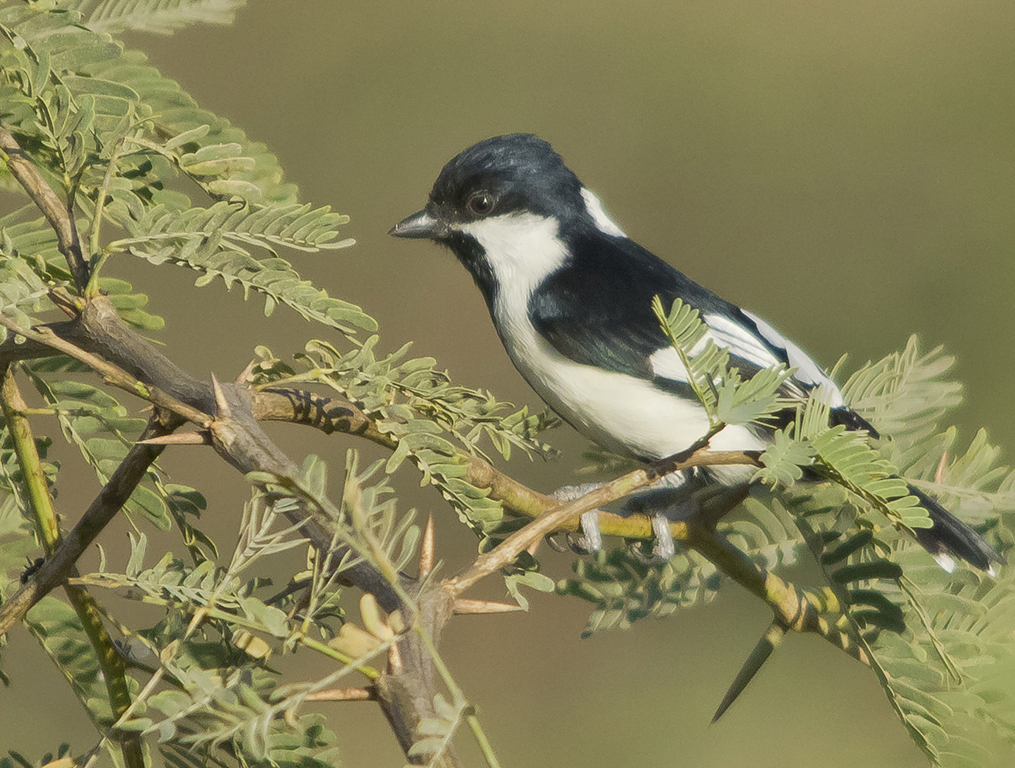
White napped Tit. Image credit: Dhaval Vargiya, Creative Commons
The ecoregion is now highly deforested and extensively degraded. The current level of protection is low at about 4% of the total area. Gir National Park is the largest and best known because of its lion population. The integrated conservation approach to manage the Gir National Park and the sanctuary since 1996 is considered to be successful, and the reserve is now rated as one of India’s best managed protected areas. Current lion population has exceeded the carrying capacity of the reserve and a large portion of it roams outside the reserve, creating human-wildlife conflict incidents.
The priority conservation actions therefore are to: 1) continue to engage the local communities as conservation stewards and provide them with appropriate alternative livelihood opportunities; 2) develop a strategy to create a linked system of ‘satellite’ reserves and corridors to aid the dispersal of lions and other wildlife; and 3) mitigate human-lion conflicts.

Asiatic lion. Image credit: Creative Commons
Citations
1. Wikramanayake, E, E. Dinerstein, et al. 2002. Terrestrial Ecoregions of the Indo-Pacific: A Conservation Assessment. Island Press.
2. Singh, H.S., Gibson, L. A conservation success story in the otherwise dire megafauna extinction crisis: The Asiatic lion (Panthera leo persica) of Gir forest. Biol. Conserv. (2011), doi:10.1016/j.biocon.2011.02.00
3. 2182. https://bit.ly/3p8RSgm Accessed Dec 10, 2017.
